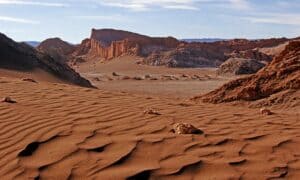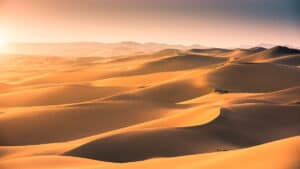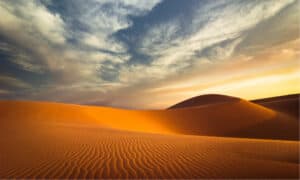The Sahara Desert is the third-largest desert in the world. Of course, you may be wondering why it’s the third-largest desert even though it looks like the biggest on the map. The Antarctic and Arctic polar and tundra deserts are bigger than the Sahara, which is a subtropical desert. The Sahara is located in northern Africa and it covers most of that area from the Red Sea to the Atlantic Ocean. The Mediterranean Sea bounds the desert in the north and the Sahel region, a slightly arid, tropical savannah, bounds it in the south.
The Sahara covers a whopping 31% of the continent of Africa. Although vegetation is scant in the area, there are still a few cities that make the Sahara Desert home. The people that live here, though, usually live on the outskirts or edges of the desert where they can rely on transportation to get goods like food and water.
For thousands of years, there have been many, diverse civilizations living near the Sahara Desert, even constructing large buildings in those regions. Let’s take a look at the 10 countries that make up the Sahara Desert.
Algeria
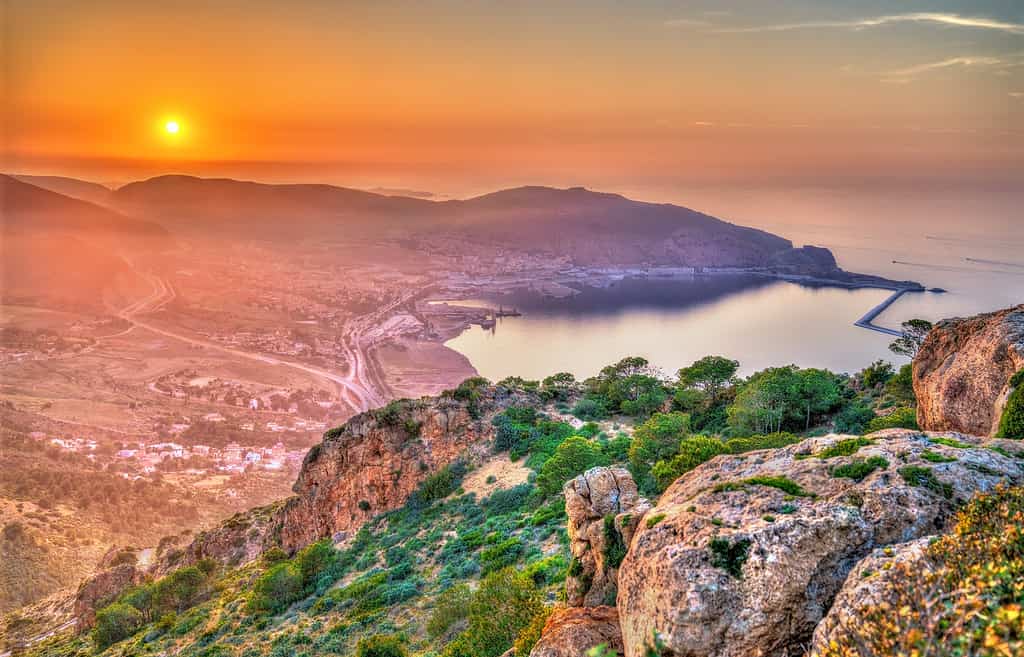
Algeria is the largest country in the continent of
Africa
, in terms of area.
©Leonid Andronov/iStock via Getty Images
More than four-fifths of the country’s territory lies in the Sahara Desert. As a result, most of the population lives in the northern part of the country near the Mediterranean Sea. The Atlas Mountains pass through the country and separate the coastal plains in the north from the desert in the southern part of the country. Algeria has a population of 44.7 million and its capital is Algiers.
Chad
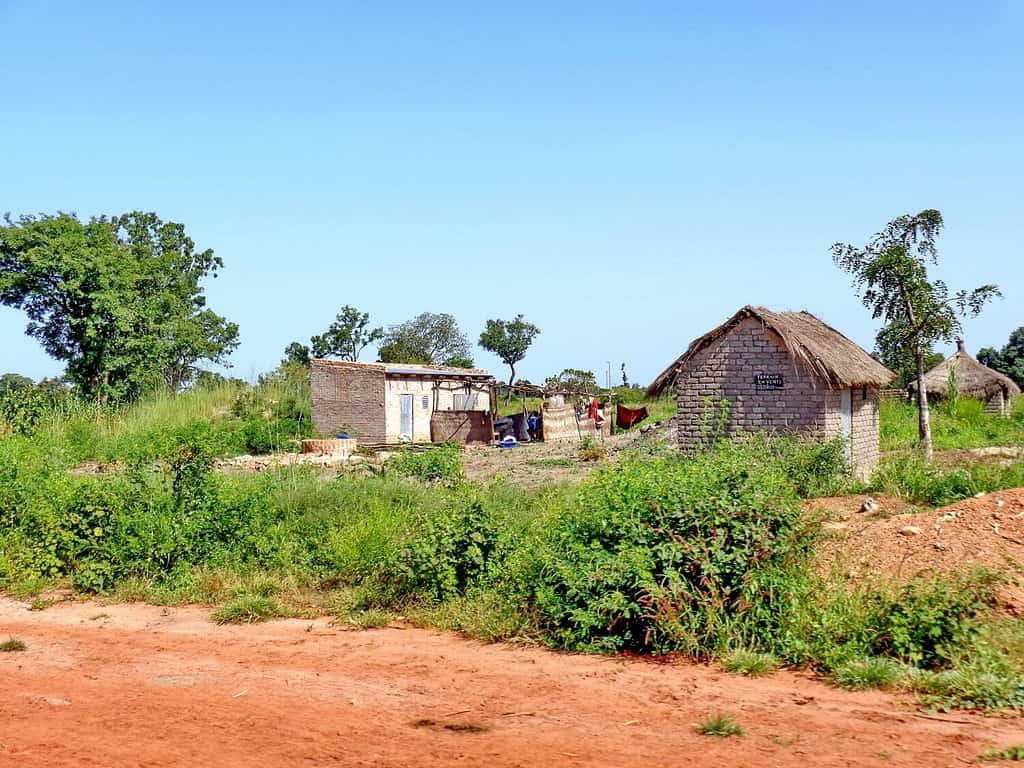
Chad claimed their independence from France on August 11, 1960.
©Angela N Perryman/Shutterstock.com
The Sahara Desert dominates much of the northern part of the country, thus most people live in the southern portion of the country, which is more of a semi-arid savannah. Lake Chad is in the southwestern part of the country and has provided the population of Chad with water and agricultural land. Just recently, Chad found an oil reserve, which in turn will put them on the map economically. Chad has a population of 18.5 million and its capital is N’Djamena.
Egypt

Cleopatra was the last pharaoh in Egypt.
©iStock.com/Givaga
The Nile River passes through the country and empties into the Mediterranean, which has provided Egypt with much-needed water and natural resources. The Nile River Delta is in the upper portions of Egypt where the majority of farmland is located. The population of the country is concentrated in the northern parts of the country near the sea and by the Nile. The rest of the country is covered in desert. Egypt has a population of 109 million and its capital is Cairo.
Libya

Libya has the biggest oil reserves in the continent of Africa.
©Hussein Eddeb/Shutterstock.com
The Sahara Desert dominates nearly all of Libya. There are no rivers that exist in the country, which means that Libyans built a man-made river containing a network of underground pipelines that provide water to its citizens. Most of the population in Libya lives in the northern part of the country near the sea. Libya has a population of 7.2 million and its capital is Tripoli.
Mali
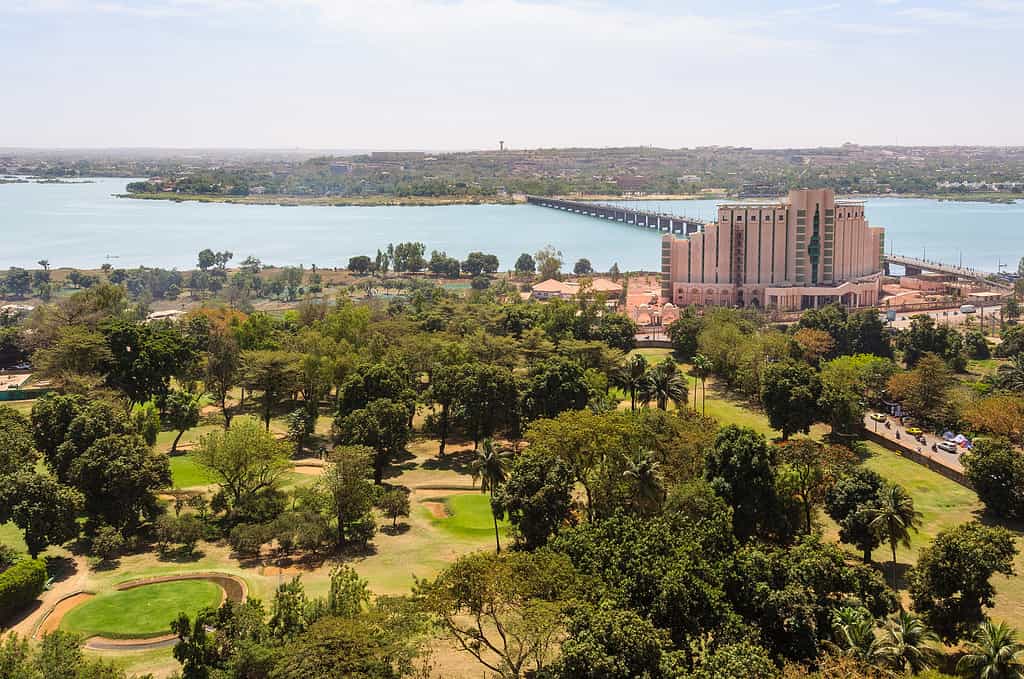
Mali is one of the hottest countries in the world.
©dutourdumonde/iStock / Getty Images Plus via Getty Images
Most of Mali is covered in desert, however, the southern portions of the country are in the Sahel region, which provides the country with much-needed water. The Niger River passes through where Mali benefits greatly, as it provides the country with fertile land for agriculture. Mali has a population of 21.3 million and its capital is Bamako.
Mauritania
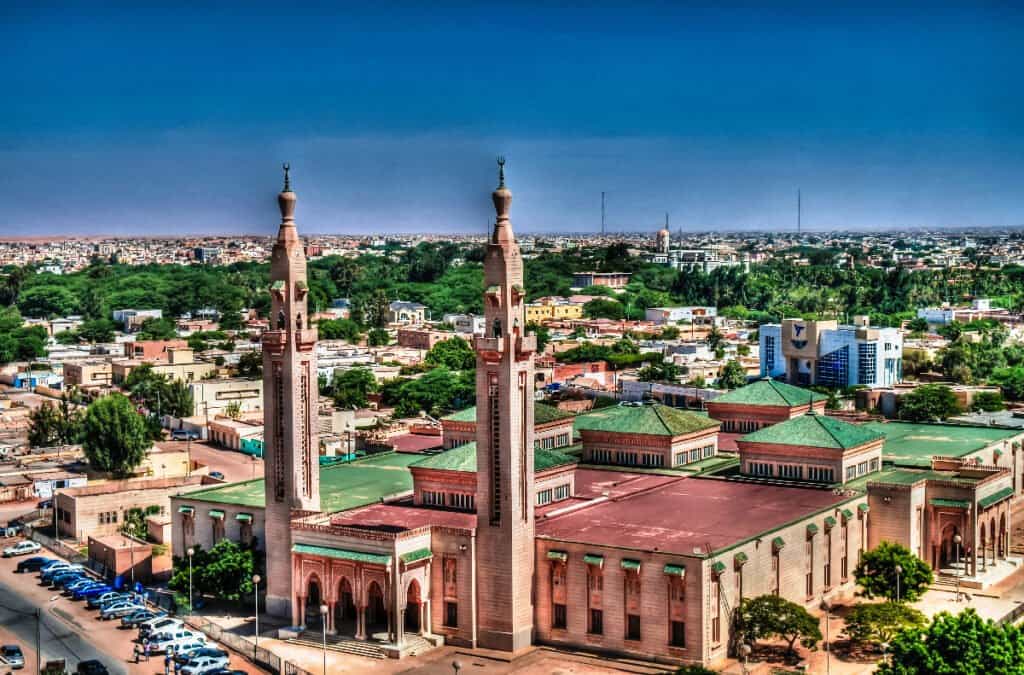
Mauritania was the last country to abolish slavery, passing the law in 1981 and being punishable by law in 2007.
©Homo Cosmicos/Shutterstock.com
The nation of Mauritania is covered mostly by the Sahara Desert, except for the western part of the country that sits to the east of the Atlantic Ocean. The ocean provides the country with much-needed water. The Senegal River makes a natural border between Mauritania and Senegal and is also a source of water for the country. Unfortunately, the country has experienced severe drought, which has plagued the country and expanded the desert westward. Mauritania has a population of 4.2 million and its capital is Nouakchott.
Morocco

The first country to recognize the United States as a nation was Morocco in 1777, although it wasn’t official until 1786.
©iStock.com/Svetla Ilieva
Morocco is located in northwestern Africa and much of the country is bordered by water — the Atlantic Ocean in the west and the Mediterranean Sea in the north. They also claim the territory known as Western Sahara. The Sahrawi Arab Democratic Republic, though, has self-proclaimed 20% of the territory. The Atlas Mountains provide the country with a natural border between the Mediterranean climate of the north and the Sahara Desert. Unfortunately, the country is plagued with droughts, which means not enough people have access to water. Morocco has a population of 37.9 million and its capital is Rabat.
Niger
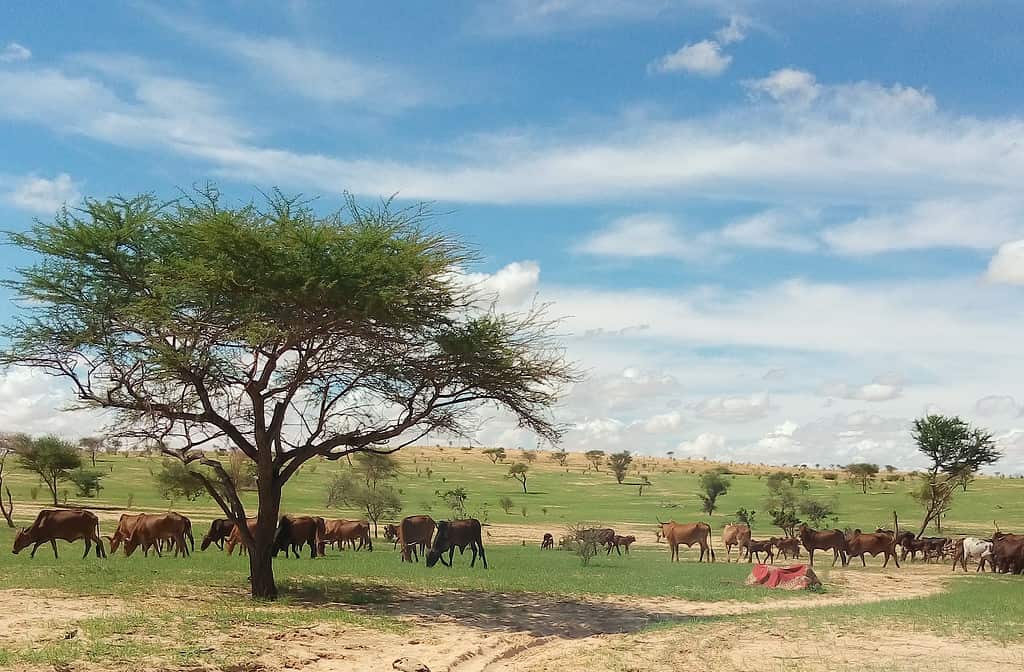
Humans have lived in the area now known as Niger for nearly 60,000 years.
©Boukar Mahamane/iStock via Getty Images
Niger is a landlocked country in northern Africa and desert covers most of the nation. The nation is divided into three regions, the desert in the north, the Sahel region in the central part of the country, and the more tropical region where the Niger River basin is located. Furthermore, the Niger River passes through the southwestern part of the country, which provides much-needed water and fertile lands. You can find rich biodiversity in the southern parts of Niger; animals that include elephants, buffaloes, and warthogs. Niger has a population of 25.3 million and its capital is Niamey.
Sudan

The country of Sudan has more pyramids than Egypt, more than 200 actually.
©iStock.com/HomoCosmicos
Sudan is in North Africa and the Sahara Desert dominates much of the northern part of the country. Luckily for the Sudanese, the Red Sea provides the nearby regions in the north with water and fertile lands. The Nile River starts in Sudan and, as a result, the whole southern region benefits greatly. The region is rich in natural resources. Unfortunately, Sudan is increasingly in danger of becoming more arid because of desertification. Sudan has a population of 49.1 million and its capital is Khartoum.
Tunisia
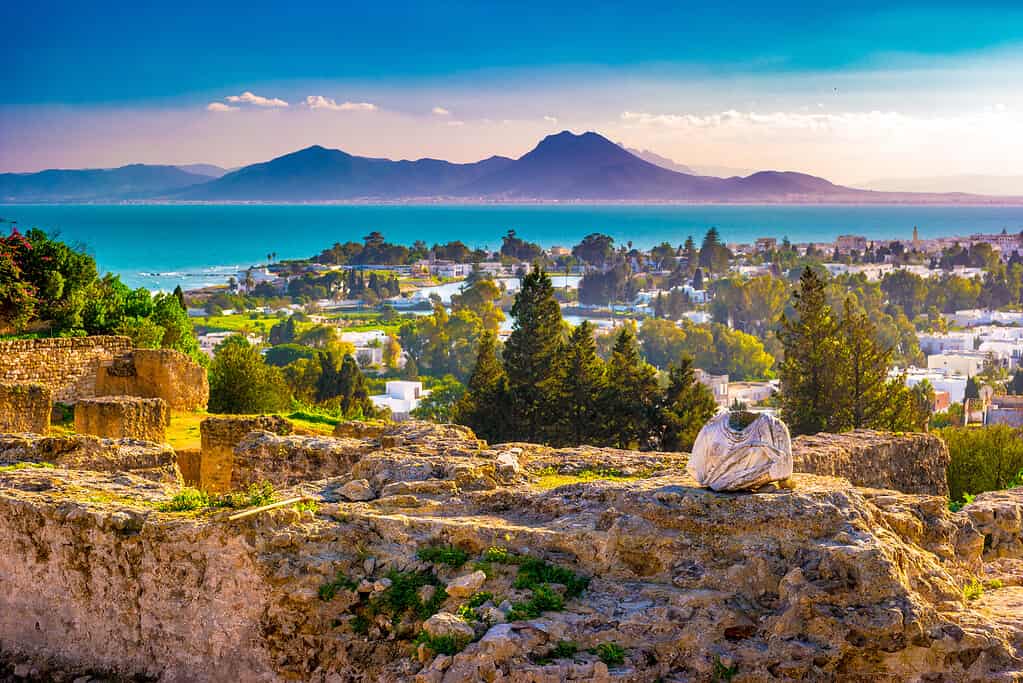
Many scenes from the
Star Warsmovies were filmed all over Tunisia.
©CJ_Romas/iStock via Getty Images
Tunisia is a small country in northern Africa and borders the Mediterranean Sea. The country is divided into two distinct climates and regions: the desert region in the south and the Mediterranean climate in the north. As a result, most of the population lives in the north. Tunisia has a population of 11.7 million and its capital is Tunis.
Sahara Desert Facts
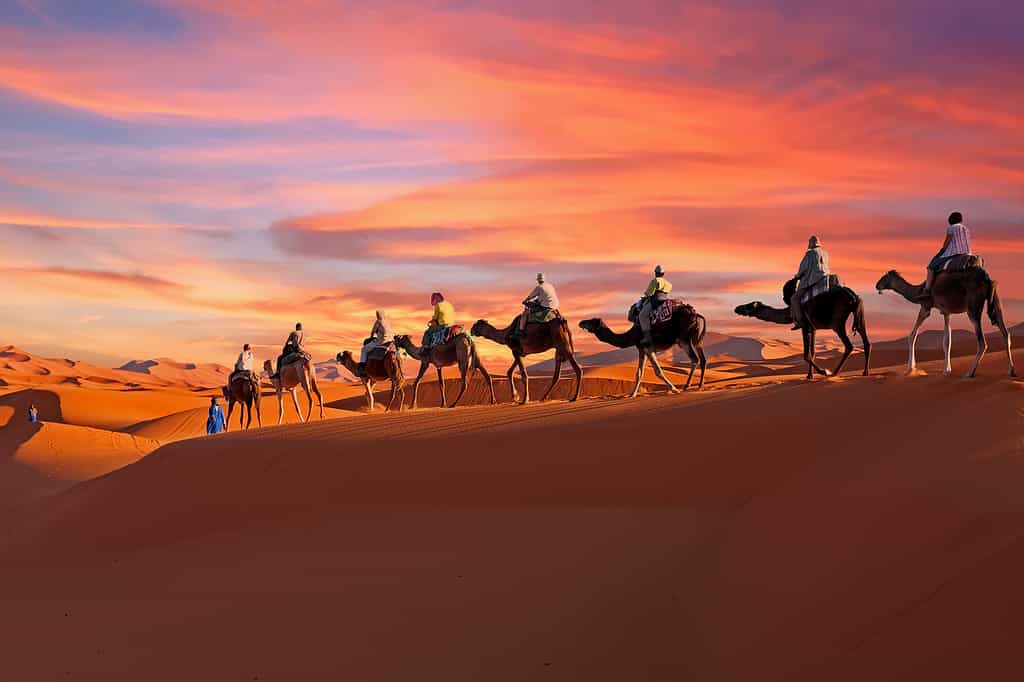
Dinosaur fossils have been found in the sands of the Sahara Desert.
©Nisangha/iStock via Getty Images
- Length: 3,000 miles (4,800 km)
- Width: 1,100 miles (1,800 km)
- Area: 3,600,000 square miles (9,200,000 square km)
Conclusion
The countries that make up the Sahara Desert include Algeria, Chad, Egypt, Libya, Mali, Mauritania, Morocco, Niger, Sudan, and Tunisia. The Sahara Desert is the largest subtropical desert in the world, which makes up a third of the African continent. Although it is not sustainable to live in the desert, some civilizations have thrived and lived on the edges of it.
Historically, the Sahara Desert has played an important role in the economies of societies living in the region. European countries that controlled northern Africa took advantage of the natural resources found in the region. Today, the desert continues to play a huge, economic role for countries in the desert area.
The photo featured at the top of this post is © MrLis/Shutterstock.com
Thank you for reading! Have some feedback for us? Contact the AZ Animals editorial team.




